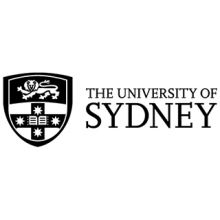Australia’s higher education review must consider whether the time has come to jettison a regulatory requirement for all universities to undertake research, the nation’s top public servant has suggested.
Glyn Davis told a Melbourne conference that the 1989 creation of Australia’s unified national system, which “regulated a very specific Australian approach to higher education”, had given rise to a sector of lookalike universities addicted to growth.
Professor Davis said research remained “a necessary feature for university accreditation…even though it’s very hard to cover the full costs of research through income. Hence, unfortunately, the imperative to grow – to recruit many students, international students in particular – and to grow, and to grow, and to grow.”
This meant the average Australian university was much larger than most of its British and North American counterparts, many of which would not be accredited under Australian law – while small specialist institutions like the California Institute of Technology “would go broke if they were in in Australia”.
Professor Davis, former vice-chancellor of Melbourne and Griffith universities and now secretary of the Department of the Prime Minister and Cabinet, said the universities accord was a chance to “question assumptions” about Australian universities.
“We can visualise a system with more varied institutions, some large and others small, some comprehensive and others specialist, commuter or residential, with more scope for experimentation and rapid evolution [and] innovative courses that complement rather than repeat the offerings of the existing universities,” he told the Tertiary Education Quality and Standards Agency (Teqsa) national conference.
“When you look between now and 2030, there are 100,000 more domestic undergraduates due to join the system. The question becomes: do we accommodate all of these new students in our existing organisations? Or do we try and begin to think about alternatives?”
Regulatory settings are included in the accord’s terms of reference. “The accord will be a long-term plan for Australia’s higher education system,” education minister Jason Clare told the conference. “It’s a great opportunity.”
Professor Davis said the Teqsa conference itself was an opportunity to think about new approaches to regulation. “Here is our chance – one of those rare moments – to dream, to argue, to put forward ideas.
“How can we make the shape of the sector more relevant, more agile, while preserving the quality at the core of the Teqsa mission? What might a system truly fit for the future look like? Here is our chance – one of those rare moments – to dream, to argue, to put forward ideas.”
Teqsa chief commissioner Peter Coaldrake said the sector had learned a lot in its “30-year journey” of regulation. But he admitted to doubts that the “command and control model” of the past decade was “entirely sustainable”.
“In fact, in our honest moments, we worry about collapsing under the weight of our own regulatory machinery,” he told the conference.
Professor Davis said two Australian universities were on the cusp of exceeding 100,000 enrolments. He said many regional institutions were now larger than the towns that had spawned them, while the University of Melbourne was “the fifth largest city in Victoria on any working day”. The University of Sydney’s 73,000 students made it bigger than any university in Britain or Canada “and amongst the largest universities in America”.
He blamed the “sheer scale” of universities for problems often ascribed to “neoliberalism”. “Scale undermines…a sense of belonging. It affects staff-student ratios. It triggers complaints about reporting overloads. It creates distance between staff and management.
“Scale requires standardised administration, sophisticated student systems and constant building programmes to provide the space and the services and the security commensurate with a medium-sized city.”
Register to continue
Why register?
- Registration is free and only takes a moment
- Once registered, you can read 3 articles a month
- Sign up for our newsletter
Subscribe
Or subscribe for unlimited access to:
- Unlimited access to news, views, insights & reviews
- Digital editions
- Digital access to THE’s university and college rankings analysis
Already registered or a current subscriber? Login












